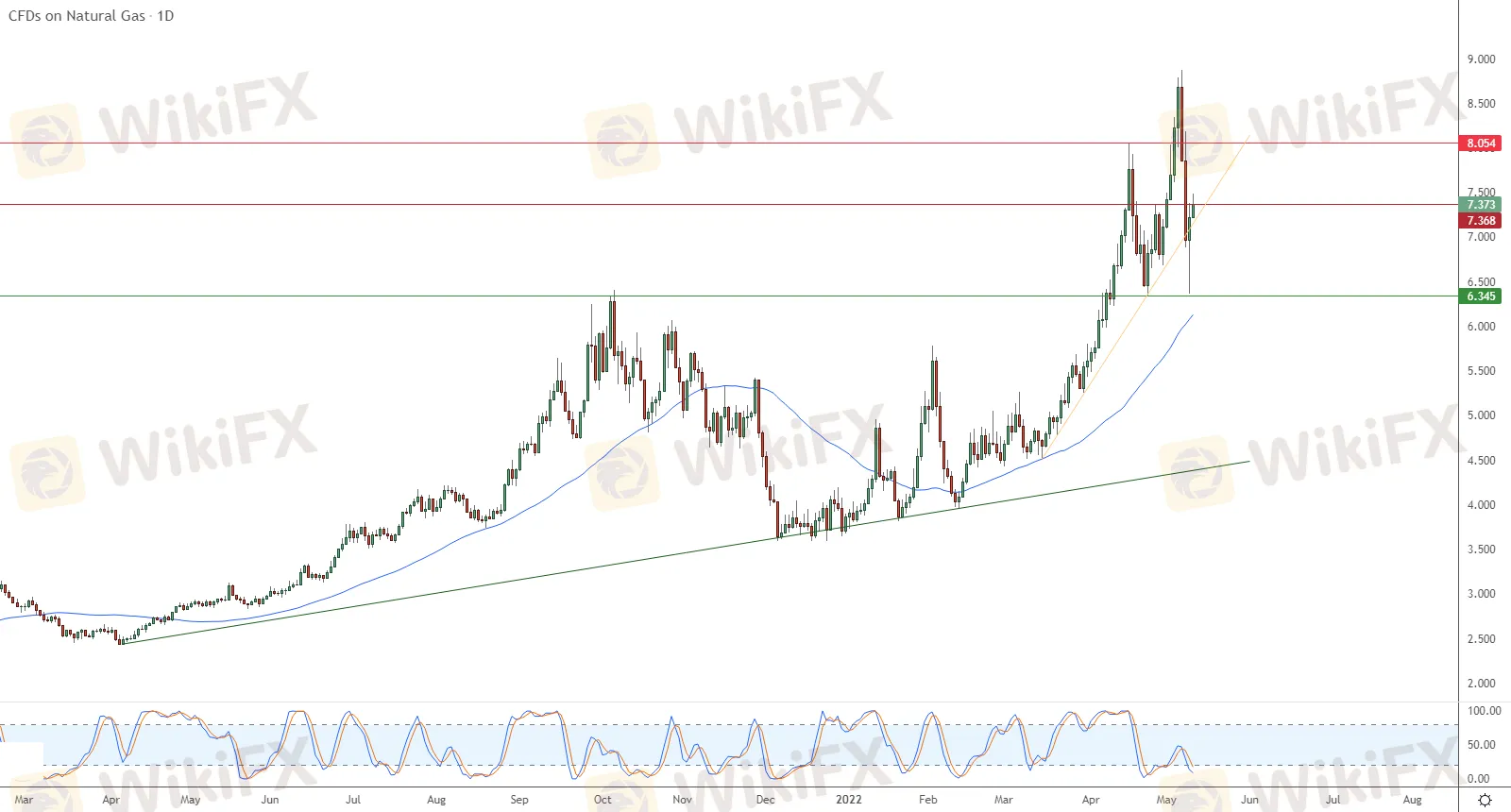简体中文
繁體中文
English
Pусский
日本語
ภาษาไทย
Tiếng Việt
Bahasa Indonesia
Español
हिन्दी
Filippiiniläinen
Français
Deutsch
Português
Türkçe
한국어
العربية
Natural Gas Technical Analysis: Price Consolidates its Gains
Abstract:Spot natural gas prices (CFDS ON NATURAL GAS) rose in their recent trading at the intraday levels, to achieve new daily gains until the moment of writing this report, by 1.98%. It settled at the price of $7.367 per million British thermal units, after its rise in trading yesterday and in a session characterized by volatility at a rate of 3.73%.
Spot natural gas prices (CFDS ON NATURAL GAS) rose in their recent trading at the intraday levels, to achieve new daily gains until the moment of writing this report, by 1.98%. It settled at the price of $7.367 per million British thermal units, after its rise in trading yesterday and in a session characterized by volatility at a rate of 3.73%.

Natural gas futures rebounded on Tuesday after losing streak in the previous two sessions, as traders assessed volatile US domestic production levels and new threats to global supplies amid reports that Russian forces have halted flows to Europe.
June gas futures contracts in Nymex settled at $7.385 per million British thermal units, up about 35.9 cents per day/day. It represents a stark reversal after the immediate month's drop of nearly $2.00 over the previous two sessions. The July contract rose 36.1 cents on Tuesday to $7.467.
A combination of threats to economic growth from high inflation, high interest rates, and war-induced uncertainty in Ukraine raised the specter of a recession and rattled stock and commodity markets in recent days, as signs of increased production added to pressure on natural gas prices earlier in the day.
The US Energy Information Administration (EIA), the research arm of the Department of Energy, released a monthly report on Tuesday that included forecasts about oil and gas production, demand and prices for the next few quarters.
The Energy Information Administration now expects natural gas prices to average $8.69 in the third quarter and $8.48 in the fourth, up 58% and 68%, respectively, from its forecast just one month ago.
One reason for the continued strength in natural gas prices is that supply is unlikely to catch up with demand this year, and storage levels will continue to fall. Natural gas is used for both heating and electricity production. Cooler temperatures this spring mean that more people are using gas for heating and an increasing amount of gas is being used for electricity. In previous years when gas prices rose, energy producers often switched their fuel source to coal, but coal supplies have declined in the United States, so power plants have fewer options.
Technically, the price received positive support as a result of the stability of the pivotal support level 6.345, which gained it some positive momentum. This came due to the main bullish trend in the medium term along a slope line, as shown in the attached chart for a (daily) period. The continuous positive pressure for its trading above its simple moving average for the previous 50 days, while we notice the beginning of a positive crossover on the RSI indicators after reaching oversold areas.
We expect more rise for natural gas during its upcoming trading, especially in the event that it breaches the current resistance 7.368, to target the first resistance levels at 8.054.
Disclaimer:
The views in this article only represent the author's personal views, and do not constitute investment advice on this platform. This platform does not guarantee the accuracy, completeness and timeliness of the information in the article, and will not be liable for any loss caused by the use of or reliance on the information in the article.
WikiFX Broker
Latest News
Bitcoin in 2025: The Opportunities and Challenges Ahead
BI Apprehends Japanese Scam Leader in Manila
Join the Event & Level Up Your Forex Journey
Is There Still Opportunity as Gold Reaches 4-Week High?
Bitcoin miner\s claim to recover £600m in Newport tip thrown out
Good News Malaysia: Ready for 5% GDP Growth in 2025!
FXCL Lucky Winter Festival Begins
Warning Against MarketsVox
Is the stronger dollar a threat to oil prices?
Rising Risk of Japan Intervening in the Yen's Exchange Rate
Currency Calculator






